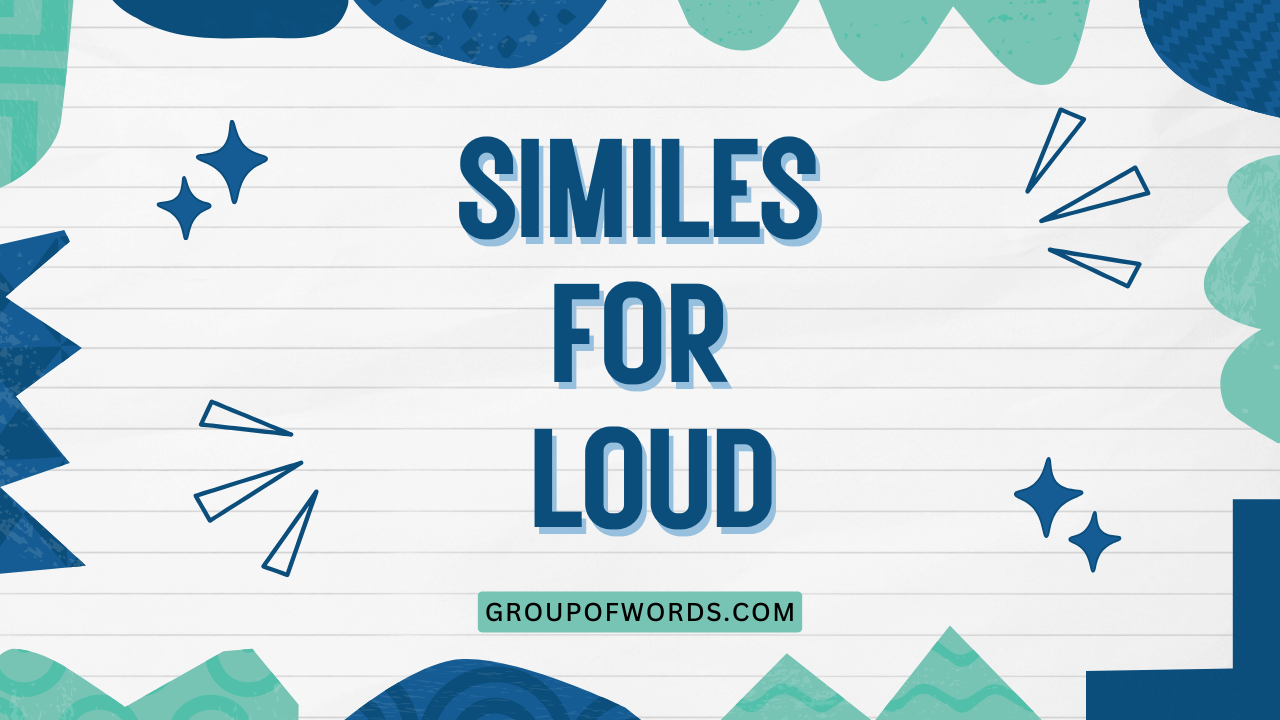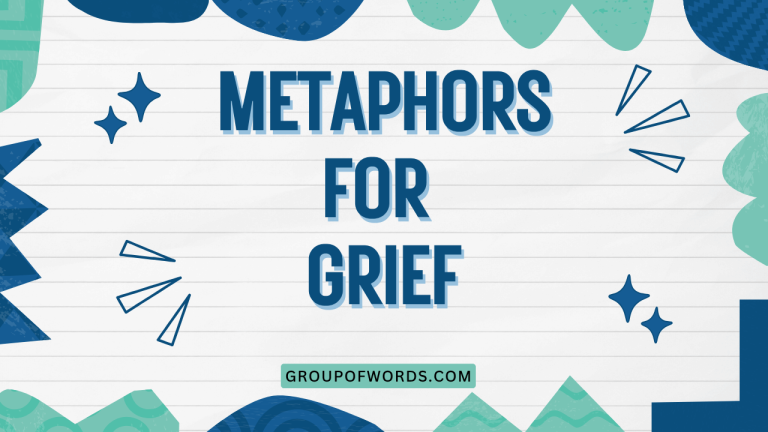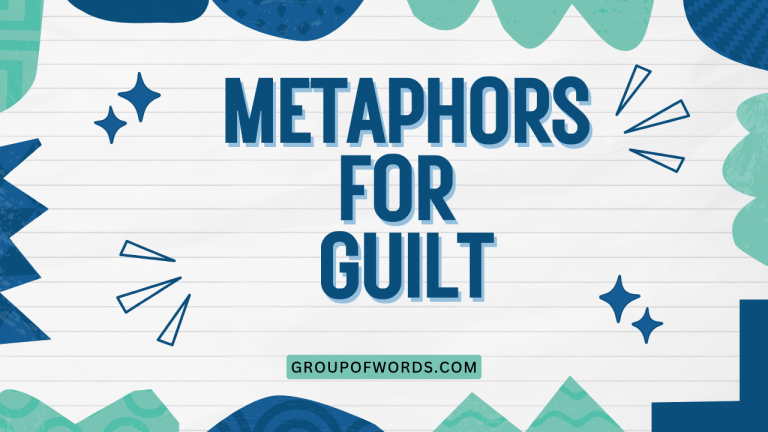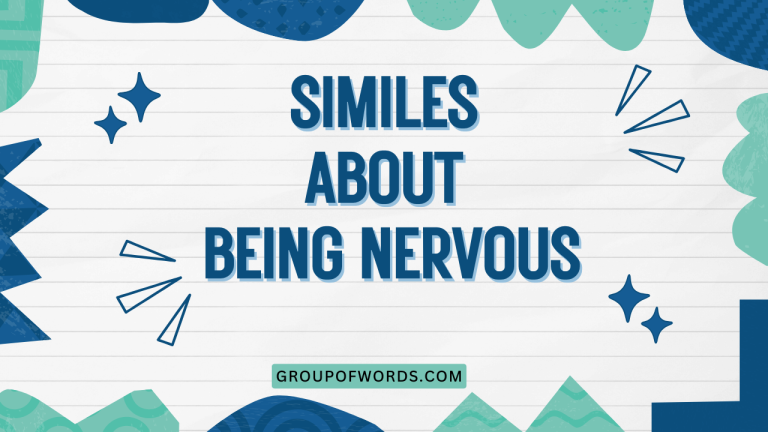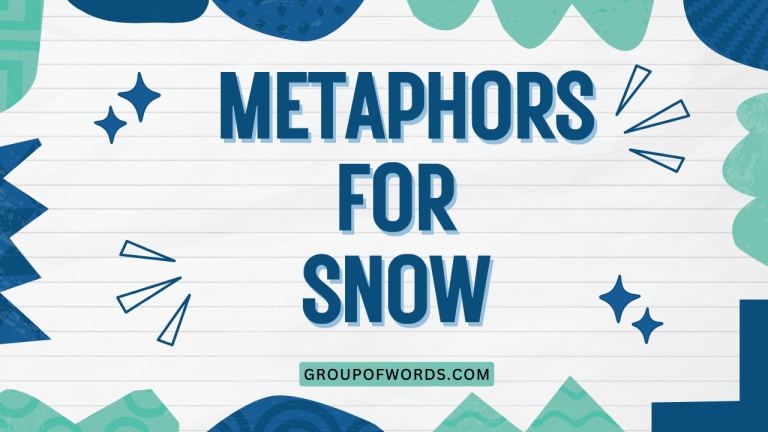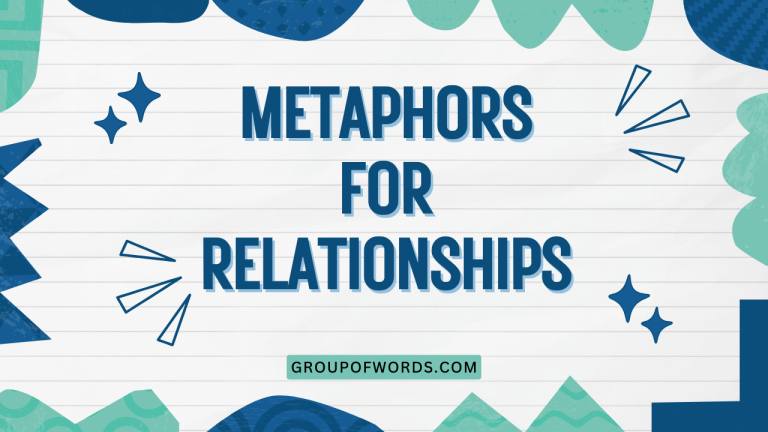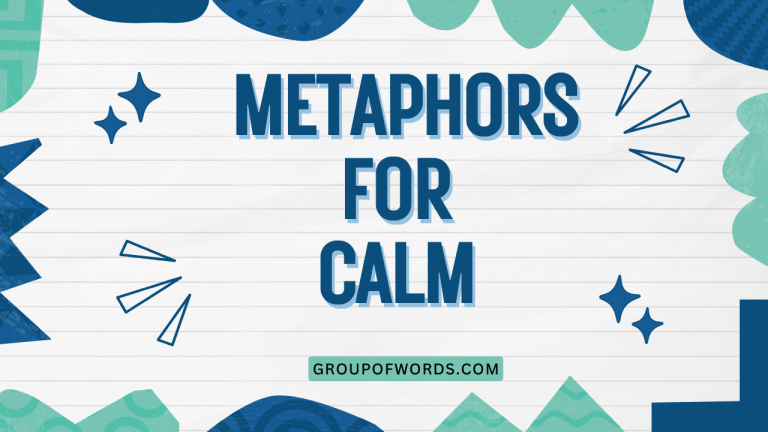Similes for Loud: Enhancing Your Descriptive Language
Understanding and utilizing similes effectively is crucial for enriching your descriptive writing and communication skills. Similes, a type of figurative language, allow you to draw comparisons between different things, making your descriptions more vivid and engaging.
This article focuses specifically on similes used to describe loudness, providing a comprehensive guide for English language learners and writers looking to expand their vocabulary and stylistic range. Whether you are a student, a writer, or simply someone who enjoys exploring the nuances of language, this guide will offer valuable insights and practical examples to help you master the art of using similes to depict sound.
By the end of this article, you will have a firm grasp of what similes are, how they function, and how to create and use them effectively to describe varying degrees of loudness. You’ll also learn about common mistakes to avoid and have the opportunity to practice your skills through targeted exercises.
Table of Contents
- Introduction
- Definition of Simile
- Structural Breakdown of Similes
- Types of Loudness Similes
- Examples of Similes for Loud
- Usage Rules for Similes
- Common Mistakes with Similes
- Practice Exercises
- Advanced Topics: Nuances and Subtleties
- Frequently Asked Questions
- Conclusion
Definition of Simile
A simile is a figure of speech that directly compares two different things using the words “like” or “as.” The purpose of a simile is to enhance the description by associating the qualities of one thing with another, thereby creating a more vivid and relatable image in the reader’s or listener’s mind. Similes are essential tools in descriptive writing and speech, allowing for more nuanced and impactful communication.
The key elements of a simile include:
- Two unlike things: The comparison must be between two things that are not inherently similar.
- Connecting word: The words “like” or “as” are used to make the comparison.
- Shared quality: There must be a shared characteristic or quality that is being compared.
For example, in the simile “The thunder was as loud as a cannon,” thunder and a cannon are being compared. They are unlike things, but they share the quality of being loud.
The word “as” connects the two, making the comparison clear.
Structural Breakdown of Similes
The basic structure of a simile is relatively straightforward. It typically consists of two parts connected by either “like” or “as.” Understanding this structure can help you create your own effective similes.
The general formula can be represented as:
A (thing being described) + like/as + B (thing being compared to)
Let’s break this down further:
- A represents the subject you are describing. In our case, this would be something that is loud.
- like/as are the connecting words that establish the comparison.
- B represents the object, sound, or concept to which you are comparing the subject. This should be something known for its loudness.
Here are a few examples illustrating this structure:
- Her scream was like a banshee’s wail. (A = scream, like, B = banshee’s wail)
- The explosion was as loud as a volcano erupting. (A = explosion, as, B = volcano erupting)
- His voice was like thunder. (A = voice, like, B = thunder)
By understanding this basic structure, you can begin to experiment with different comparisons to create more descriptive and engaging similes.
Types of Loudness Similes
Similes for loudness can be categorized based on the type of comparison they make and the specific nuance they convey. Here are some common types:
General Loudness Similes
These similes simply emphasize the high volume of a sound without necessarily adding other connotations. They are straightforward and effective for conveying a basic sense of loudness.
Unexpected Loudness Similes
These similes highlight the surprising or jarring nature of a loud sound. They often involve comparisons to things that are typically quiet or unexpected.
Negative Loudness Similes
These similes convey the unpleasant or disruptive quality of a loud sound. They often involve comparisons to things that are irritating or harmful.
Positive Loudness Similes
While less common, these similes can be used to describe loudness in a positive or exciting way. They might be used to describe the sound of a cheering crowd or a powerful musical performance.
Animal Sounds Similes
These similes compare sounds to various animal noises, which can be effective in conveying both the type and intensity of the sound.
Examples of Similes for Loud
Below are several examples of similes for “loud,” categorized by the types discussed above. Each table provides a variety of comparisons to help you understand the range and versatility of these similes.
These examples will serve as inspiration for crafting your own descriptive phrases.
General Loudness
These similes focus on the basic quality of being loud without adding extra layers of meaning. They’re perfect for simple, direct descriptions.
The following table presents examples of similes that describe general loudness:
| Simile | Explanation |
|---|---|
| As loud as a jet engine | Emphasizes the extreme volume associated with a jet engine. |
| Like a thunderclap | Compares the sound to the sudden, booming noise of thunder. |
| As loud as a rock concert | Relates the sound to the high decibel levels of a live music performance. |
| Like a roaring waterfall | Compares the sound to the powerful, continuous noise of a waterfall. |
| As loud as a construction site | Associates the sound with the cacophony of heavy machinery and hammering. |
| Like a freight train passing by | Captures the rumbling and powerful sound of a large train. |
| As loud as a stadium crowd | Highlights the collective roar of a large group of people. |
| Like a bomb exploding | Conveys an intense and destructive level of loudness. |
| As loud as a siren wailing | Emphasizes the piercing and attention-grabbing sound of a siren. |
| Like a jackhammer at work | Relates the sound to the repetitive, jarring noise of a jackhammer. |
| As loud as a launching rocket | Highlights the forceful and explosive sound of a rocket taking off. |
| Like a chainsaw cutting wood | Captures the high-pitched, grinding noise of a chainsaw. |
| As loud as a fireworks display | Associates the sound with the booming and crackling of fireworks. |
| Like a marching band playing | Conveys the collective volume of multiple instruments playing together. |
| As loud as a garbage truck | Relates the sound to the grinding and clattering of a garbage truck. |
| Like a motorcycle revving its engine | Captures the powerful and throaty sound of a motorcycle engine. |
| As loud as a fire alarm | Emphasizes the shrill and urgent sound of a fire alarm. |
| Like a blender on high speed | Compares the sound to the whirring and grinding of a blender. |
| As loud as a vacuum cleaner | Highlights the droning and consistent noise of a vacuum cleaner. |
| Like a stampede of elephants | Conveys the powerful and earth-shaking sound of many elephants running. |
| As loud as a tornado | Emphasizes the roaring and destructive sound of a tornado. |
| Like a washing machine on spin cycle | Relates the sound to the rumbling and vibrating of a washing machine. |
| As loud as a crowded sports bar | Highlights the collective noise of people talking and cheering. |
| Like a lawnmower running | Captures the buzzing and whirring of a lawnmower. |
| As loud as a hammer striking steel | Emphasizes the sharp and ringing sound of metal on metal. |
Unexpected Loudness
These similes emphasize the surprise factor of a sudden, loud noise. They’re great for adding a sense of shock or alarm to your descriptions.
The following table presents examples of similes that describe unexpected loudness:
| Simile | Explanation |
|---|---|
| As loud as a balloon popping | Highlights the sudden and startling sound of a balloon bursting. |
| Like a firecracker going off | Compares the sound to the sharp, unexpected bang of a firecracker. |
| As loud as a door slamming shut | Emphasizes the abrupt and forceful sound of a door closing. |
| Like a book dropping on a silent floor | Captures the jarring contrast between the quiet environment and the sudden noise. |
| As loud as a car backfiring | Associates the sound with the unexpected and often startling noise of a car engine malfunction. |
| Like a sudden clap of thunder on a clear day | Highlights the surprising and out-of-place nature of the loud sound. |
| As loud as a dropped microphone | Emphasizes the amplified and unexpected sound of a microphone hitting the floor. |
| Like a gunshot in a library | Conveys the extreme contrast between the quiet setting and the violent sound. |
| As loud as a sneeze in church | Highlights the disruptive and attention-grabbing nature of the sound in a quiet environment. |
| Like a phone ringing in a movie theater | Captures the irritating and out-of-place sound in a quiet, focused setting. |
| As loud as a baby crying on a plane | Emphasizes the piercing and unavoidable sound in a confined space. |
| Like a pin dropping in a concert hall, amplified | Highlights the unexpected amplification of a normally quiet sound. |
| As loud as a dropped stack of dishes | Emphasizes the clattering and chaotic sound of breaking dishes. |
| Like a chair suddenly collapsing | Captures the abrupt and startling sound of a chair breaking. |
| As loud as a pot falling off the stove | Highlights the crashing and metallic sound of a pot hitting the floor. |
| Like a scream in the middle of the night | Conveys the frightening and unexpected nature of the sound. |
| As loud as an alarm clock going off | Emphasizes the jarring and intrusive sound of an alarm. |
| Like a sudden shout in a quiet room | Highlights the abrupt and attention-grabbing nature of the sound. |
| As loud as a horn honking in a tunnel | Emphasizes the amplified and echoing sound in a confined space. |
| Like a branch snapping in the woods | Captures the sharp and unexpected sound in a quiet, natural setting. |
| As loud as a book slamming shut | Emphasizes the forceful and abrupt sound of a book closing. |
| Like a coin dropping on a metal surface | Highlights the sharp and ringing sound of metal on metal. |
| As loud as a drawer being slammed | Emphasizes the forceful and abrupt sound of a drawer closing. |
| Like a twig snapping underfoot | Captures the crisp and unexpected sound in a quiet environment. |
| As loud as a pen clicking repeatedly | Highlights the repetitive and irritating sound of a pen. |
Negative Loudness
These similes convey the unpleasant, irritating, or even harmful aspects of loud sounds. They’re useful for describing sounds that are not only loud but also disruptive or painful.
The following table presents examples of similes that describe negative loudness:
| Simile | Explanation |
|---|---|
| As loud as nails on a chalkboard | Emphasizes the grating and unpleasant sound. |
| Like a dentist’s drill | Compares the sound to the high-pitched and irritating noise of a dental tool. |
| As loud as a mosquito buzzing in your ear | Highlights the annoying and persistent nature of the sound. |
| Like a car alarm going off repeatedly | Captures the irritating and disruptive sound of a car alarm. |
| As loud as a crying baby on an airplane | Emphasizes the piercing and unavoidable sound in a confined space. |
| Like a leaky faucet dripping all night | Highlights the repetitive and maddening sound. |
| As loud as a screeching train | Emphasizes the high-pitched and grating sound of train wheels on the tracks. |
| Like a busy signal on a phone | Conveys the frustrating and persistent tone. |
| As loud as a leaf blower early in the morning | Highlights the disruptive and unwelcome sound. |
| Like a blender grinding ice | Captures the harsh and grating sound of ice being crushed. |
| As loud as a swarm of bees buzzing | Emphasizes the overwhelming and irritating sound. |
| Like a garbage disposal running | Conveys the grinding and unpleasant sound. |
| As loud as a broken record skipping | Highlights the repetitive and irritating sound. |
| Like a washing machine rattling | Captures the vibrating and disruptive sound. |
| As loud as a smoke detector beeping with a low battery | Emphasizes the persistent and annoying sound. |
| Like a printer constantly jamming | Conveys the frustrating and repetitive sound. |
| As loud as a dial-up modem connecting | Highlights the screeching and unpleasant sound. |
| Like a rusty hinge squeaking | Captures the high-pitched and irritating sound. |
| As loud as a keyboard being typed on aggressively | Emphasizes the sharp and clattering sound. |
| Like a dripping faucet | Conveys the repetitive and maddening sound of water droplets. |
| As loud as a room full of screaming children | Emphasizes the chaotic and overwhelming sound. |
| Like a rusty swing set creaking | Captures the high-pitched and irritating sound. |
| As loud as a truck engine braking | Emphasizes the loud hissing sound. |
| Like metal scraping against metal | Conveys the unpleasant and grating sound. |
| As loud as a door buzzer | Highlights the sharp and irritating tone. |
Positive Loudness
These similes describe loudness in a positive or exciting context. They’re useful for describing sounds that are powerful, energetic, or celebratory.
The following table presents examples of similes that describe positive loudness:
| Simile | Explanation |
|---|---|
| As loud as a cheering crowd | Emphasizes the enthusiastic and joyful sound of a large group. |
| Like a triumphant fanfare | Compares the sound to a celebratory and powerful musical piece. |
| As loud as a fireworks finale | Highlights the exciting and explosive sound of a fireworks display. |
| Like a marching band at a parade | Captures the energetic and uplifting sound of a band playing. |
| As loud as a gospel choir singing | Emphasizes the powerful and harmonious sound of voices. |
| Like a rock anthem playing in a stadium | Conveys the energetic and exhilarating sound of live music. |
| As loud as a waterfall cascading down a cliff | Highlights the powerful and awe-inspiring sound of nature. |
| Like a symphony orchestra at its peak | Captures the rich and full sound of a large ensemble. |
| As loud as a standing ovation erupting | Emphasizes the enthusiastic and appreciative sound of an audience. |
| Like a brass band playing a lively tune | Conveys the cheerful and energetic sound of brass instruments. |
| As loud as a powerful engine roaring | Highlights the strong and impressive sound of a motor. |
| Like a cannon salute firing | Captures the celebratory and impactful sound of cannons. |
| As loud as a drum solo during a concert | Emphasizes the energetic and attention-grabbing sound of drums. |
| Like a choir singing Handel’s Messiah | Conveys the powerful and uplifting sound of choral music. |
| As loud as a pipe organ playing in a cathedral | Highlights the resonant and majestic sound of the instrument. |
| Like a barbershop quartet harmonizing | Captures the blended and pleasing sound of voices. |
| As loud as a jet taking off at an air show | Emphasizes the forceful and impressive sound of aviation. |
| Like a bluegrass band playing at a festival | Conveys the lively and energetic sound of string instruments. |
| As loud as a stadium horn at a game | Highlights the celebratory and exciting sound. |
| Like a bagpipe band marching | Captures the unique and stirring sound of bagpipes. |
Animal Sounds
These similes compare sounds to various animal noises, providing a vivid and often humorous way to describe loudness.
The following table presents examples of similes that describe loudness using animal sounds:
| Simile | Explanation |
|---|---|
| As loud as a lion’s roar | Emphasizes the powerful and commanding sound. |
| Like a pack of wolves howling | Compares the sound to the eerie and intense noise of wolves. |
| As loud as a flock of geese honking | Highlights the cacophonous and noisy sound of geese. |
| Like a swarm of cicadas buzzing | Captures the high-pitched and overwhelming sound of insects. |
| As loud as a crow cawing | Emphasizes the harsh and grating sound of a crow. |
| Like a peacock screeching | Conveys the loud and piercing sound of a peacock. |
| As loud as a pig squealing | Highlights the high-pitched and shrill sound of a pig. |
| Like a frog croaking in a pond | Captures the deep and resonant sound of a frog. |
| As loud as a rooster crowing at dawn | Emphasizes the sharp and attention-grabbing sound. |
| Like a cat hissing angrily | Conveys the sharp and threatening sound of a cat. |
| As loud as a monkey chattering in the jungle | Highlights the noisy and chaotic sound of monkeys. |
| Like a parrot squawking | Captures the loud and repetitive sound of a parrot. |
| As loud as a donkey braying | Emphasizes the harsh and drawn-out sound of a donkey. |
| Like a seagull screeching overhead | Conveys the piercing and coastal sound of a seagull. |
| As loud as a elephant trumpeting | Highlights the resounding and distinctive sound of an elephant. |
| Like a dog barking incessantly | Captures the repetitive and annoying sound of a dog. |
| As loud as a whale singing in the ocean | Emphasizes the deep and resonating sound of a whale. |
| Like a chorus of crickets chirping | Conveys the high-pitched and constant sound of crickets. |
| As loud as a turkey gobbling | Highlights the distinctive and loud sound of a turkey. |
| Like a snake hissing menacingly | Captures the sharp and threatening sound of a snake. |
Usage Rules for Similes
Using similes effectively involves understanding a few key rules and guidelines:
- Clarity: The comparison should be clear and easily understood. The reader should be able to immediately grasp the connection between the two things being compared.
- Relevance: The shared quality should be relevant to the description. The comparison should enhance the reader’s understanding of the subject.
- Originality: While common similes can be effective, strive for originality to make your writing more engaging and memorable. Avoid clichés like “as loud as a bomb” unless you have a specific reason to use them.
- Context: The simile should fit the context of your writing. Consider the tone, audience, and purpose of your piece when choosing a simile.
Here’s a table summarizing these rules:
| Rule | Description | Example |
|---|---|---|
| Clarity | The comparison should be easy to understand. | Good: “His voice was as loud as a foghorn.” (Clear comparison) Bad: “His voice was as loud as a quantum fluctuation.” (Unclear comparison) |
| Relevance | The shared quality should be relevant to the description. | Good: “The music was as loud as a rock concert, making it hard to hear.” (Loudness is relevant) Bad: “The music was as loud as a rock concert, and the sky was blue.” (Loudness is irrelevant to the sky) |
| Originality | Strive for unique comparisons. | Good: “The explosion was like a dragon’s roar.” (More original) Bad: “The explosion was as loud as a bomb.” (Cliché) |
| Context | The simile should fit the tone and purpose of your writing. | Good: (In a playful story) “The yell was as loud as a cartoon character getting hit with a hammer.” Bad: (In a serious news report) “The yell was as loud as a cartoon character getting hit with a hammer.” |
Common Mistakes with Similes
Even experienced writers can make mistakes when using similes. Here are some common errors to avoid:
- Using clichés: Overused similes can make your writing sound uninspired. Try to come up with fresh and original comparisons.
- Comparing things that are too similar: A simile should compare two different things, not two things that are already very similar.
- Creating illogical comparisons: The comparison should make sense. Avoid comparing things that have no obvious shared qualities.
- Using incorrect grammar: Make sure your simile is grammatically correct. The words “like” and “as” should be used properly.
Here’s a table illustrating these mistakes with corrections:
| Mistake | Incorrect Example | Correct Example |
|---|---|---|
| Using clichés | The sound was as loud as thunder. | The sound was like a giant slamming a metal door. |
| Comparing similar things | The shout was as loud as a yell. | The shout was as loud as a jet engine taking off. |
| Illogical comparison | The noise was as loud as a flower. | The noise was as loud as a construction site. |
| Incorrect grammar | He was loud like a trumpet. | He was as loud as a trumpet. |
Practice Exercises
Test your understanding of similes with these practice exercises. For each question, fill in the blank with an appropriate simile.
Exercise 1: General Loudness
Complete the following sentences with similes describing general loudness.
| Question | Answer |
|---|---|
| 1. The explosion was __________. | As loud as a dynamite blast. |
| 2. Her voice was __________. | Like a foghorn in the distance. |
| 3. The music at the concert was __________. | As loud as a jet engine taking off. |
| 4. The construction site was __________. | Like a symphony of jackhammers. |
| 5. The motorcycle’s engine was __________. | As loud as a roaring beast. |
| 6. The stadium crowd’s cheer was __________. | Like a thunderous wave. |
| 7. The siren’s wail was __________. | As loud as a banshee’s cry. |
| 8. The blender grinding ice was __________. | Like a rock crusher in action. |
| 9. The washing machine on spin cycle was __________. | As loud as a freight train rumbling by. |
| 10. The vacuum cleaner running was __________. | Like a persistent drone. |
Exercise 2: Unexpected Loudness
Complete the following sentences with similes describing unexpected loudness.
| Question | Answer |
|---|---|
| 1. The balloon popping was __________. | As loud as a gunshot in the quiet room. |
| 2. The door slamming shut was __________. | Like a clap of thunder on a sunny day. |
| 3. The car backfiring was __________. | As loud as a cannon firing unexpectedly. |
| 4. The book dropping on the floor was __________. | Like a bomb exploding in the library. |
| 5. The sneeze in church was __________. | As loud as a foghorn announcing its presence. |
| 6. The dropped stack of dishes was __________. | Like an avalanche of shattering porcelain. |
| 7. The chair collapsing suddenly was __________. | As loud as a tree falling in the forest. |
| 8. The pot falling off the stove was __________. | Like a metallic explosion in the kitchen. |
| 9. The alarm clock going off was __________. | As loud as a fire alarm blaring next to your ear. |
| 10. The sudden shout in the room was __________. | Like a thunderclap out of nowhere. |
Exercise 3: Negative Loudness
Complete the following sentences with similes describing negative loudness.
| Question | Answer |
|---|---|
| 1. The nails on the chalkboard were __________. | As loud as a torture device. |
| 2. The dentist’s drill was __________. | Like a swarm of angry bees attacking your teeth. |
| 3. The mosquito buzzing in my ear was __________. | As loud as a tiny jackhammer. |
| 4. The car alarm going off was __________. | Like a screaming banshee in the neighborhood. |
| 5. The crying baby on the plane was __________. | As loud as a jet engine roaring inside my head. |
| 6. The leaky faucet dripping was __________. | Like a water torture slowly driving me insane. |
| 7. The screeching train was __________. | As loud as nails being dragged across metal. |
| 8. The smoke detector beeping was __________. | Like a persistent and maddening alarm. |
| 9. The dial-up modem connecting was __________. | As loud as a robot screaming in agony. |
| 10. The room full of screaming children was __________. | Like a chaotic zoo filled with wild animals. |
Advanced Topics: Nuances and Subtleties
For advanced learners, understanding the nuances and subtleties of similes can elevate your writing even further. Consider these advanced topics:
- Implied Similes: These are similes where the “like” or “as” is omitted, creating a more subtle comparison. For example, instead of “His voice was like thunder,” you could write “His voice thundered.”
- Extended Similes: These are similes that are developed over several sentences or even paragraphs, exploring the comparison in greater detail.
- Metaphor vs. Simile: While both are figures of speech that make comparisons, a metaphor states that one thing *is* another, while a simile uses “like” or “as” to suggest a resemblance. Understanding the difference can help you choose the most effective tool for your writing.
By mastering these advanced techniques, you can create more sophisticated and impactful similes that add depth and richness to your writing.
Frequently Asked Questions
Here are some frequently asked questions about similes:
- What is the difference between a simile and a metaphor?
A simile uses “like” or “as” to compare two things, while a metaphor states that one thing *is* another. For example, “He is as brave as a lion” is a simile, while “He is a lion” is a metaphor.
- Why are similes useful in writing?
Similes make your writing more vivid and engaging by creating strong images in the reader’s mind. They can also help to clarify complex ideas by relating them to something more familiar.
- How can I create original similes?
Think outside the box and consider unusual or unexpected comparisons. Look for shared qualities that are not immediately obvious. Also, read widely and pay attention to the similes used by other writers.
- Are there any situations where I shouldn’t use similes?
Similes should be used sparingly and only when they enhance your writing. Avoid using them in situations where clarity and precision are paramount, such as in technical or scientific writing.
- What makes a simile
like a cliché?
A simile becomes a cliché when it is overused and has lost its impact. Common examples include “as loud as thunder” or “as loud as a bomb.” To avoid clichés, try to come up with unique and original comparisons.
Conclusion
Similes are powerful tools for enhancing your descriptive writing, particularly when depicting the quality of loudness. By understanding the structure, types, and usage rules of similes, you can create vivid and engaging descriptions that captivate your audience.
Remember to strive for clarity, relevance, and originality in your comparisons, and avoid common mistakes like using clichés or illogical associations. With practice and attention to detail, you can master the art of using similes to bring your writing to life.
